Review: Audio Design Desk
With the ever-increasing demand for video content, quick and professional creative workflows are vital for audio producers. We take a seat at the desk to assess the benefits of this one.
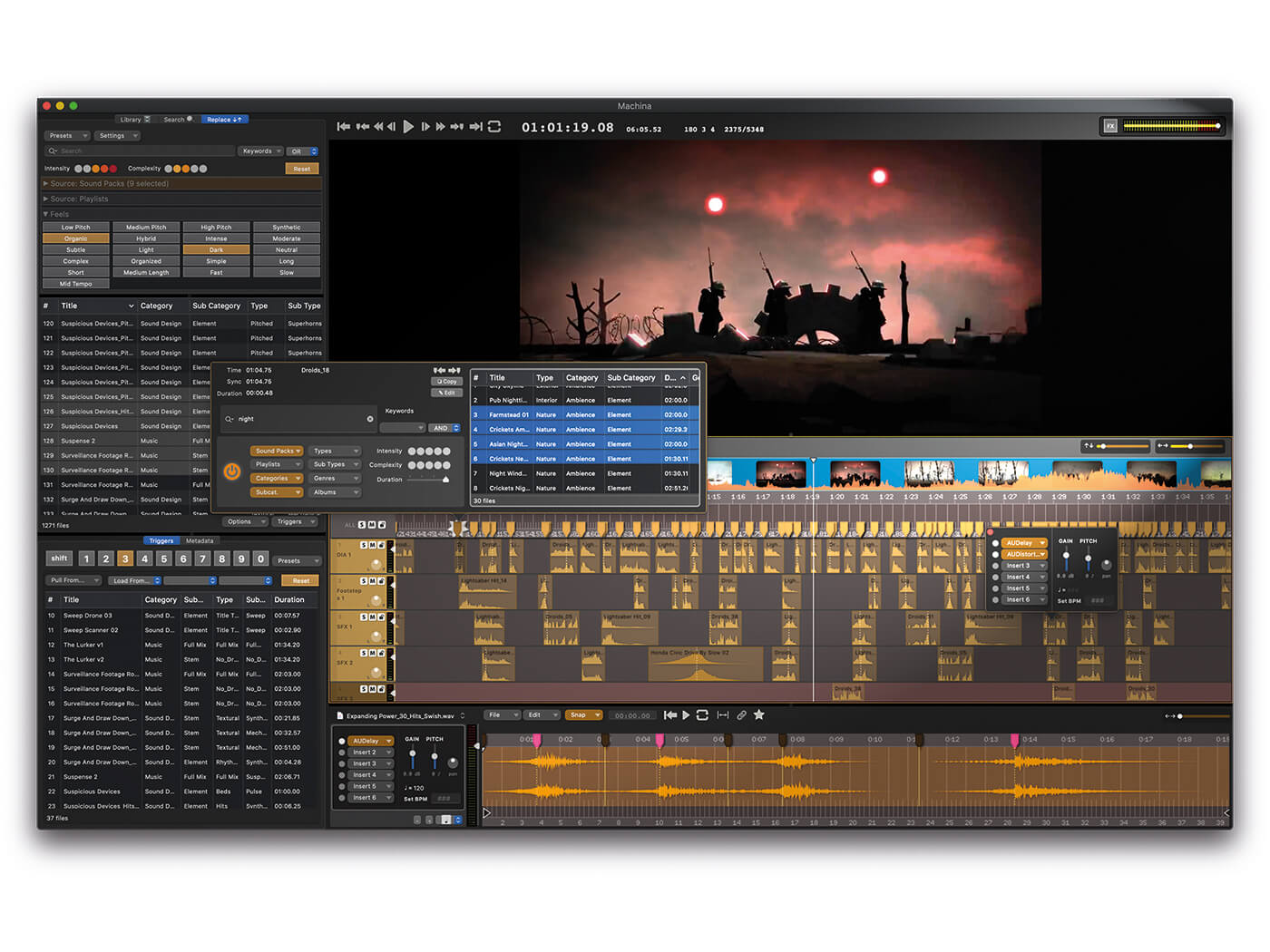
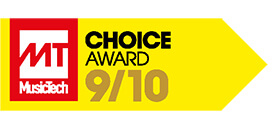
Price £10 per month/£20 per month
Contact Audio Design Desk
On the face of it, Audio Design Desk looks like any other DAW. Dig into its offering, however, and you’ll quickly discover some unique capabilities. Jamie Hardt, sound design and effects editor for such blockbusters as Zero Dark Thirty, Insidious and 2017’s It, recently stated said that this is the application he’s been looking for his entire life. He’s not the only one. Similarly skilled Academy Award nominees are also getting excited about this groundbreaking application, which works seamlessly with Pro Tools, Premiere and Final Cut Pro. But what’s all the fuss about? Can this new user-friendly DAW really change the game for those in audio post-production?
ADD is the brainchild of Los Angeles-based developer, film-maker and composer Gabriel Cowan. Not one to wait around, Cowan signed to Geffen Records straight out of high school and went on to create a couple of platinum albums, and toured the world playing and recording with the likes of Jackson Browne, Ry Cooder, Robbie Robertson and Tower of Power. After landing his first scoring job for a low-budget film, Cowan was advised by the director to get into the movie-making industry. He subsequently hung up his compositional hat and returned to education, achieving a master’s in film directing before going on to produce more than 10 features and even directing a few of his own.
Where does Audio Design Desk fit in? Well, we asked him. “I always struggled with finding, creating, and synchronising sound to picture,” says Cowan. “I was always thinking about a solution.” Four years ago, he found one. Realising that, in his own words “all sound serves the same purpose”, Cowan wondered what would happen if he could give every sound a sync marker and the ability to swap it out. This is the fundamental idea behind Audio Design Desk.
Bringing his concept to fruition meant getting some help from a few friends. He pitched the idea to an old college room-mate who had since become a popular programmer, having worked on the foundations of YouTube and Apple TV. Within three weeks of the meeting, the rudimentary concept had been born. Another union with close friend Sam Music, a sound designer for major movie trailers, proved crucial in producing more than 6,000 of the 20,000 sounds that the application draws upon.
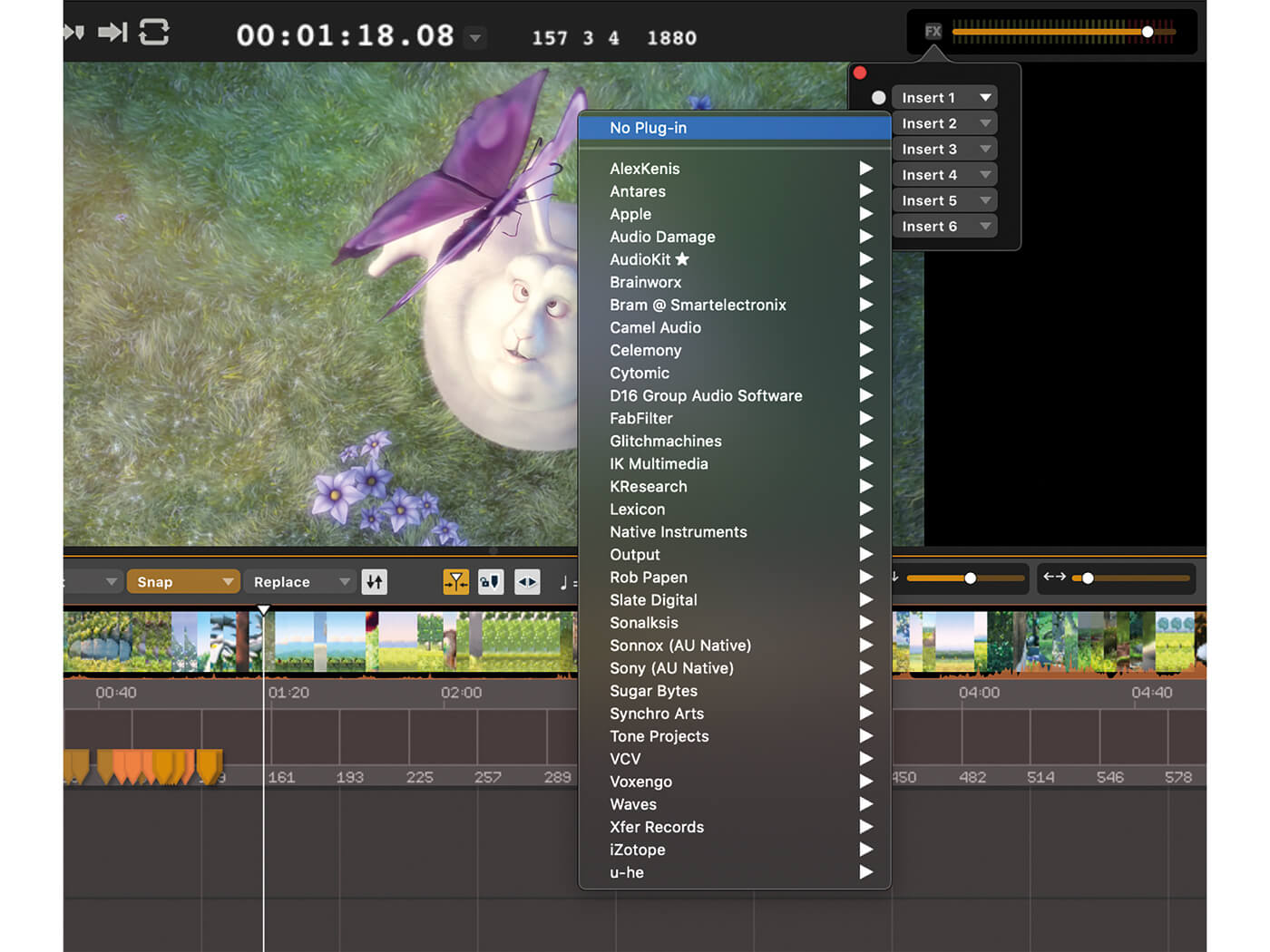
Tier to tier
Audio Design Desk was born of a need to handle a difficult process more smoothly. No application or program to date can deal with the synchronising of sound to media from the ground up. The ADD team even went one step further by expanding the base idea of hits, rises and transitions to include all aspects of sound-to-media production. Music, sound effects and sound design can be used in the three tiered versions – Create, Produce and Pro – and each tier comes with thousands of sounds, acclaimed programmable triggers, an intelligent importer, an AI Creative Engine, groundbreaking replacement tools and revolutionary sync technology.
The lite Create tier can be used for free via the ADD website, add.app. Alternatively, for about £10 a month, you’ll get access to virtually unlimited functionality via the Produce model or, if you want maximum power, opt for the £20 per month Pro tier, which allows you to unleash the full potential of this media sound sensation. The Pro tier grants you access to 20,000 high-definition audio file platinum packs, multichannel export in virtually any format, unlimited regions, 20 key triggers and many more features, making it an attractive option. If you do choose to start out on a lower tier though, you can easily upgrade to unlock additional content via just a few clicks. With version 1.3, there is now a perpetual licence option too.
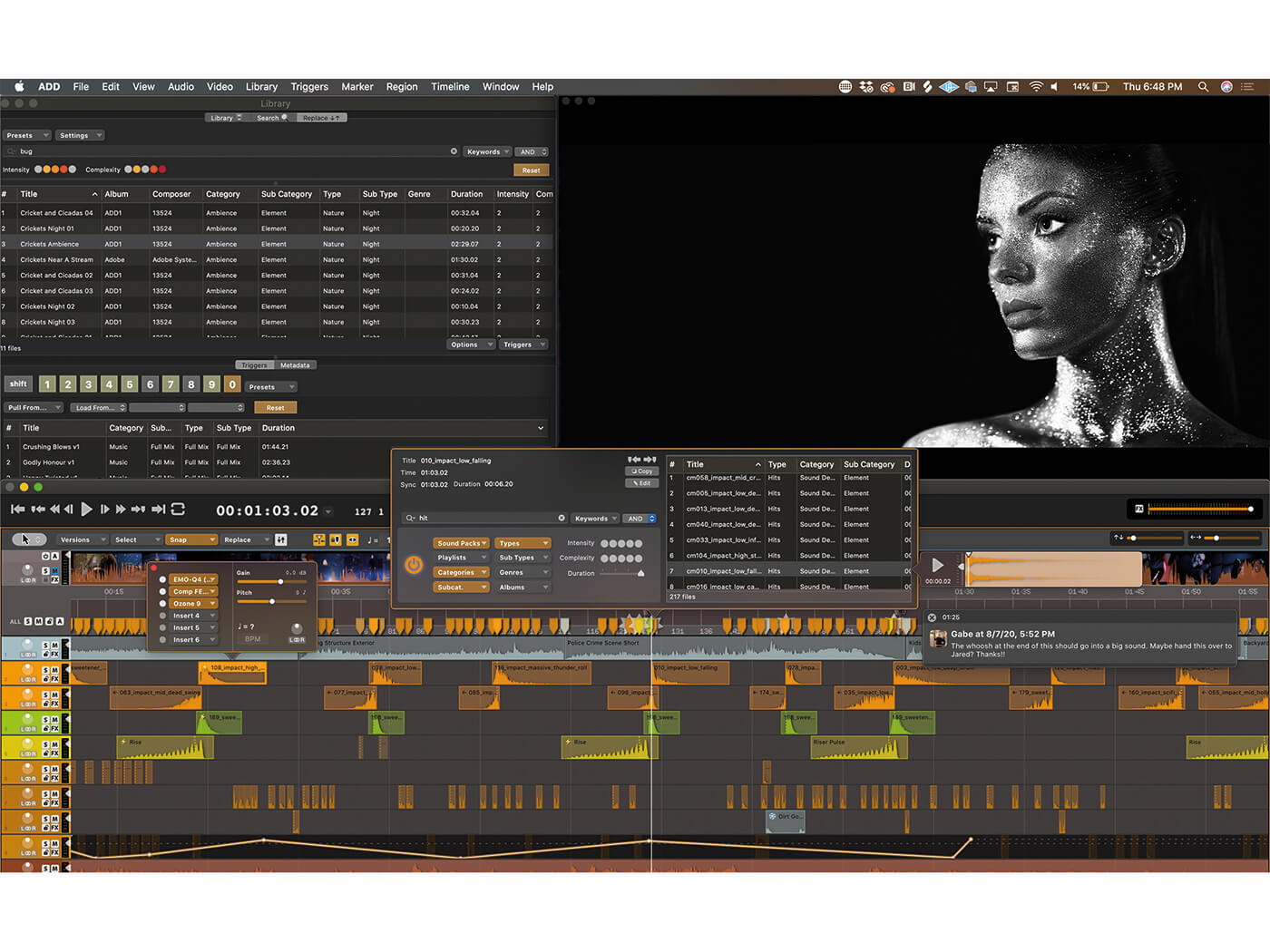
Through the window
ADD comes with five resizeable and two detachable windows, as well as a standard transport bar that features all the typical DAW controls, plus master gain controls with additional multiple master effects insert points for third-party plug-in chains. SMPTE timecode and metering functions are also included in the transport. The video window contains a viewer that can be opened, closed, detached. You can import video by simply right-clicking to access the import options or of course via the keyboard shortcut – committing ADD’s multitude of shortcuts to memory will take some time but will save you much more in the long run.
You can add visual media locally from a drive file or directly from a URL such as YouTube, Vimeo and other online sources. Once imported, ADD will download the source file and store it locally. The original media audio is added to a track in the audio timeline and, on the track header (as with all audio tracks in ADD), are pan, mute, solo, bypass and automate options, as well as a freshly updated importer option.
The library window contains three tabs: Library, Search and Replace. The Library tab accesses your own library of sounds and saved presets, plus add.app’s playlists, your personal playlists, and any installed sound packs from Audio Design Desk. Downloading the 60GB of ADD content can be done via the manager as either HD WAV files or M4A files, and stored either locally or externally.
Users can access their sounds, projects, exports, bounces, clips and videos via the Your Library tab. Inside the sound packs are folders that feature organised ADD sounds. Many of the sound packs are the names of specific categories (Ambience, Foley, Footsteps, Music, Sound Design and Sound Effects). The folder structure in the library is well set up for customisation and ease of use for regular users, with favourites, last imports, project favourites, clips for triggers, blacklist folders and the current session sounds.
All of the audio content is currently sourced and processed in-house, the company currently releasing new packs every five weeks or so, as well as updating existing ones. The app now features a store that will ultimately allow sound designers to partner with Audio Design Desk and add their own packs to sell or give away. The file structure is easy to navigate. There’s a handy search tab to expedite the process but, if you’d rather go digging, it simply consists of category > sub-category > type and sub-type.
If you’ve used a sound that you want to replace, you’ll find them in the same folder as the original. The search functions are detailed, as this is the core of the program. However, with the keywords and drop-down menus, even those searches for which you’re not quite sure what you’re looking for become clear and simple. Users can also refine searches using the Intensity and Complexity parameters.
In the timeline window, you’ll find all the typical session components, including tracks, audio regions, clips, sync markers, a time ruler, the timeline toolbar and a video track. Users of other DAWs should recognise this workspace. This is where the bulk of your work is done, with four central editing tools: arrow, cut, fade and timestretch. With the Versions menu, you can create and save multiple versions of a project then switch between them to choose the final one. Using the Select menu in the Timeline allows you to select regions and markers by category, type or sub-type.
For example, a project may contain footsteps on concrete, wood and sand but, if you only want to select the sand footsteps for editing, processing or replacement, doing so in ADD is easy – much easier than it would be in other DAWs. When opening an audio file in the timeline, the sound editor window gives you access to audio-region editing options, providing six inserts (third-party plug-ins only), gain, pitch, pan, original BPM and new BPM information. There are other functions per region too, including but not limited to alignment, replacement functions and rendering options, all of which can also be performed by right-clicking regions.
The metadata window tells you which triggers have sounds assigned to the 10 numbers that correspond to the qwerty keyboard, and what sounds are assigned to each trigger. Users can make changes to the assignments through colour recognition. Assignment can be done by selecting a sound and dragging it to a trigger, and multiple sounds can be assigned to one trigger. Letters on the qwerty keyboard also insert specific sounds into the timeline, which can be swapped out if not working with a narrative – for example, H for hit sounds, R for rise sounds, T for transitions and so on. You can also view and edit the metadata of selected sounds. You may want to add more keywords, genres, categories and types, for example. This function is useful when it comes to recording and tagging your own sound libraries.
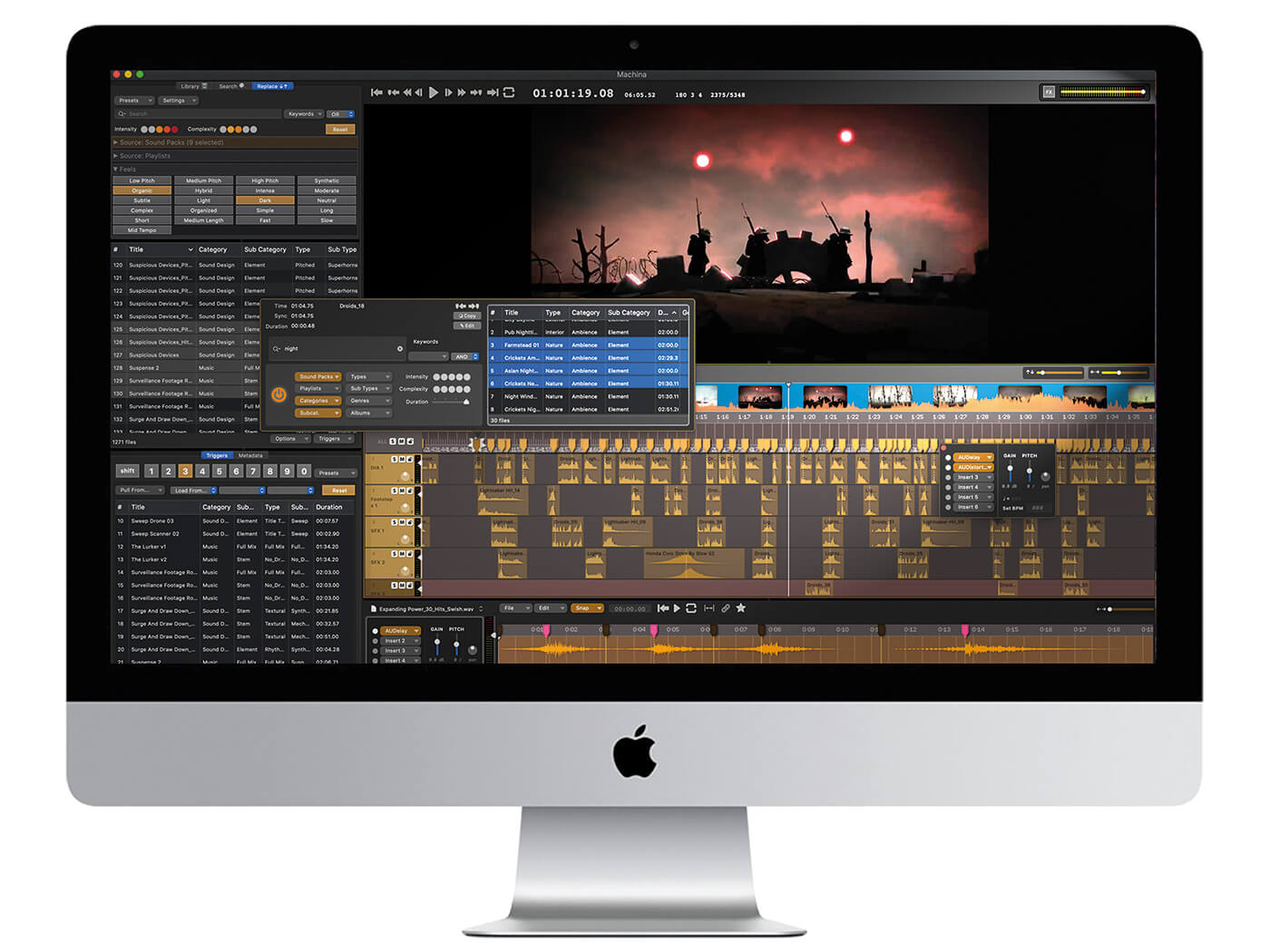
Performing sound design
Once you have added a visual media source into Audio Design Desk, searching and assigning triggers and using sounds from the timeline can save hours of digging through complex libraries, and completely eliminates the need to import and nudge things to the right place.
One key feature that we love – and that sets ADD apart from the alternatives – is the ability to perform found sounds via the qwerty keyboard into a smart sampler/controller. Here, every sound can be performed and added in real time to a media source, which can be played back at variable speeds for perfect synchronisation. ADD conducted time-based tests before the app’s launch, pitting it against another high-performance DAW used for post-production. If we’re to believe ADD’s results, its product can operate 80 per cent faster than its competitors. By the time experienced editors had completed 10 seconds of media synchronisation with the rival DAW, ADD had tackled two minutes’ worth.
Comprehensive shortcut key commands play a big part in getting the most out of this application and, as before, learning them is advantageous. We certainly notice our speed increasing when we begin to employ the vast amount of shortcuts. Performing sound synchronisation in this way transforms users into foley artists, adding sounds using the trigger panel and swapping out shoe and gun sounds within just a few clicks. ADD has drastically overhauled the process of spotting sound too. No more will users need to add markers, create spot lists, source or record sounds and add it to sync markers. ADD’s clever Magic marker allows you to search through the libraries to place sounds at your desired point. With it, Audio Design Desk has set a new standard for placing, replacing and searching for sounds.
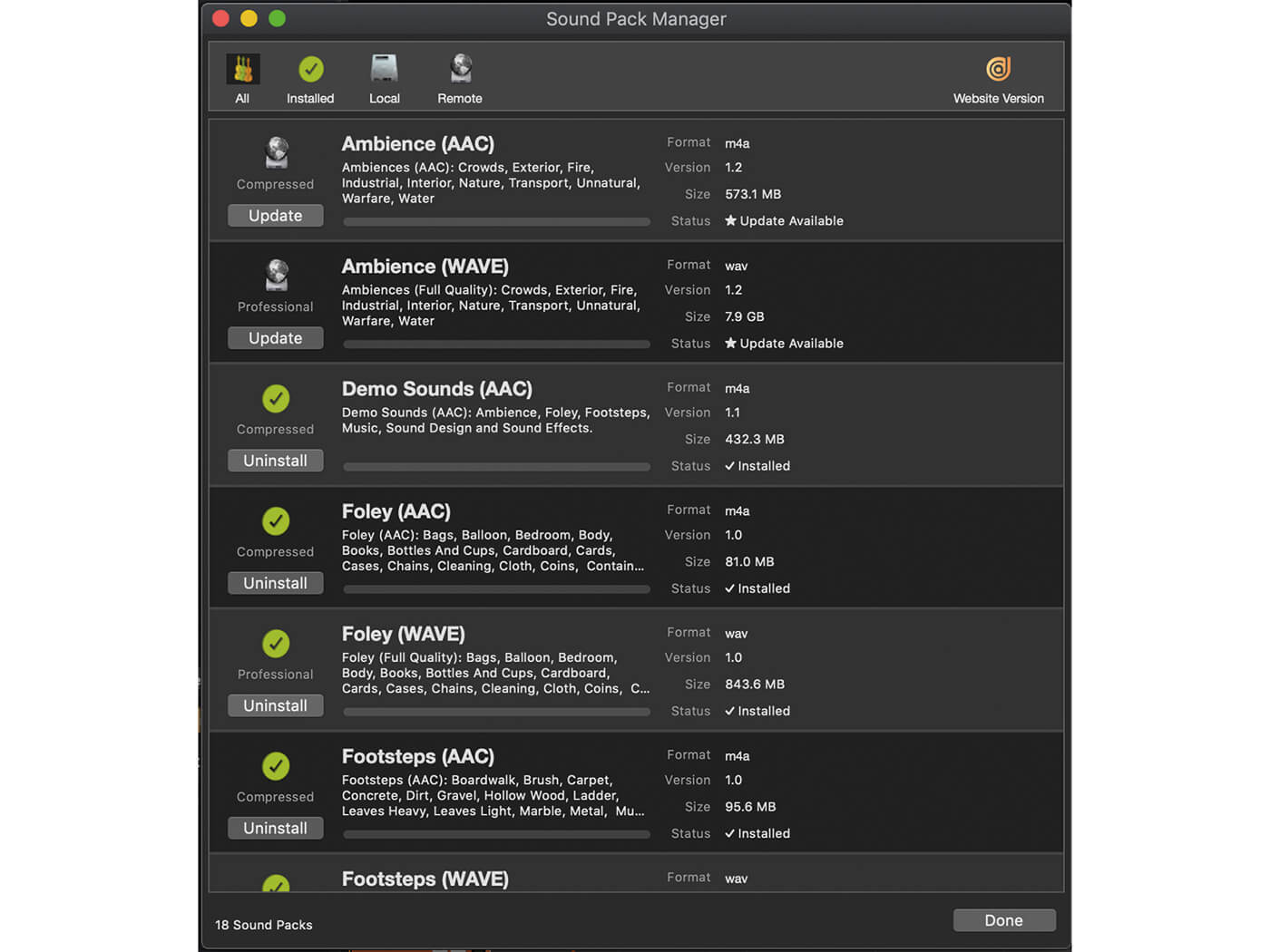
Sonic intelligence
AI is integral to ADD’s importer. It issues all the sounds in the program their type, sub-type, category and sub-category so they’re all sensibly classified. More importantly, though, it dictates how each sound is synced to video. In other DAWs, importing and synchronising sounds can be challenging, with users having to make the sync manually. ADD eradicates this and instead automatically sync-marks sounds to the image. With the marker, you can quickly replace sounds if they don’t match your narrative.
Once you’ve synchronised your sounds, you can tell Audio Design Desk what genre, mood or feel you would like to apply to each sound, select how intense or complex the composition should be and then turn one sound-design composition into infinite alternatives without losing sync. The Sonic Intelligence AI is part composition tool, part inspirational friend, all magic. ADD will also learn your style over time, its unique algorithm paying attention to your choices as you select and reject sounds, and adapting its suggestions for future searches. The program strives to become your new creative assistant and, in this industry, we could all do with one of those.
Do I really need this?
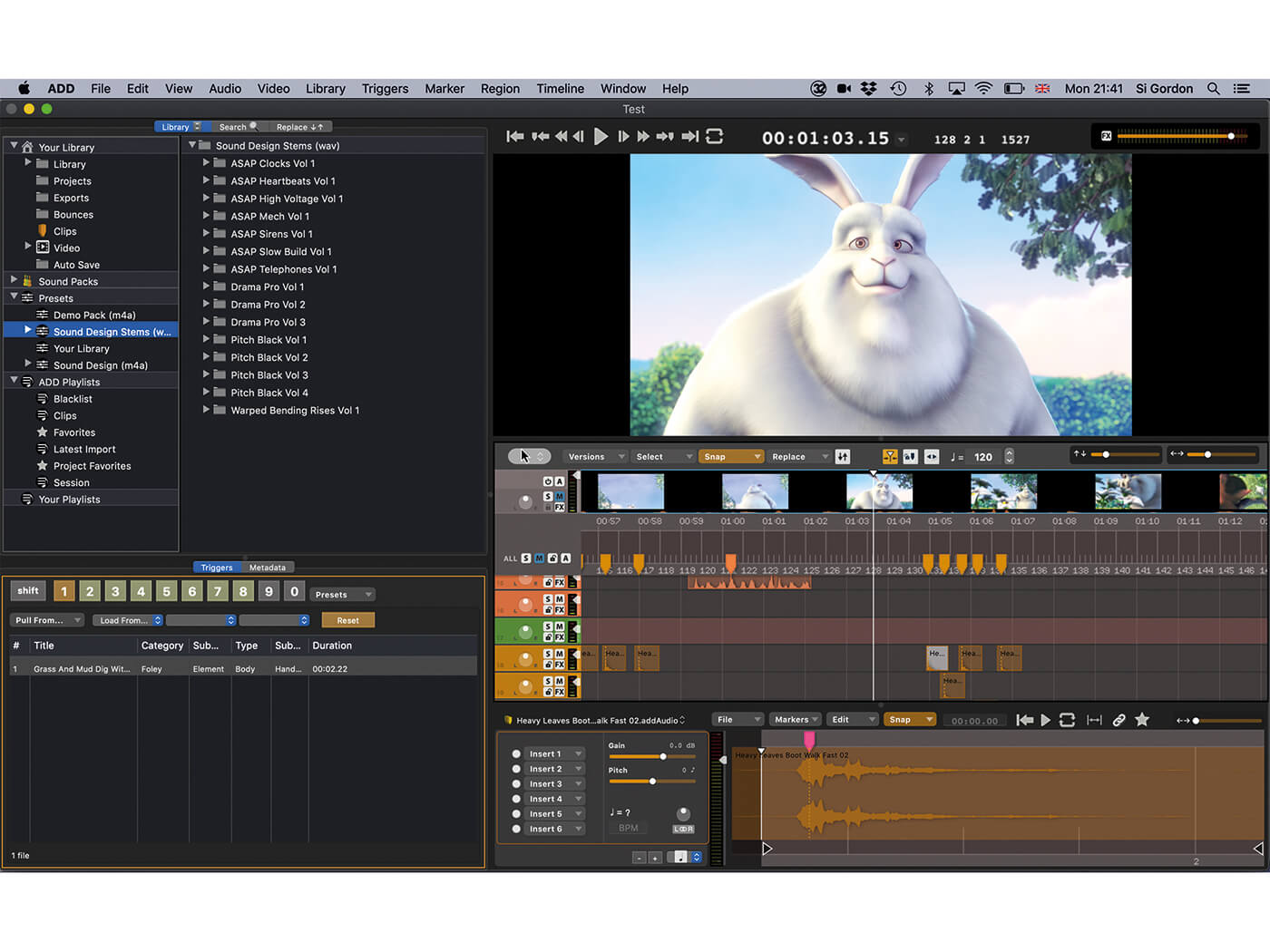
If you work in sound design for visual media, the answer is a resounding yes. Audio Design Desk is able to meet the needs of both amateur and professional sound designers, composers and film-makers, and helps users speed up their workflow and achieve their desired results in minutes rather than hours.
The pro-level sound designers who have already sampled the delights of ADD felt threatened by its capabilities at first, with some suggesting that it could put them out of work. But given time and direction, they found that the software opened up their creative abilities like never before. If you’re working on personal projects and looking for a DAW dedicated to audio-to-visual synchronisation, it doesn’t get any better than this. Even the free version should meet your needs.
Key features
- 20,000 AAC WAV sounds
- Sonic Intelligence AI
- Unlimited sound packs
- AAF, XML, Cuesheet Export
- Remote and local video import
- Comprehensive Key Commands
Alternatives
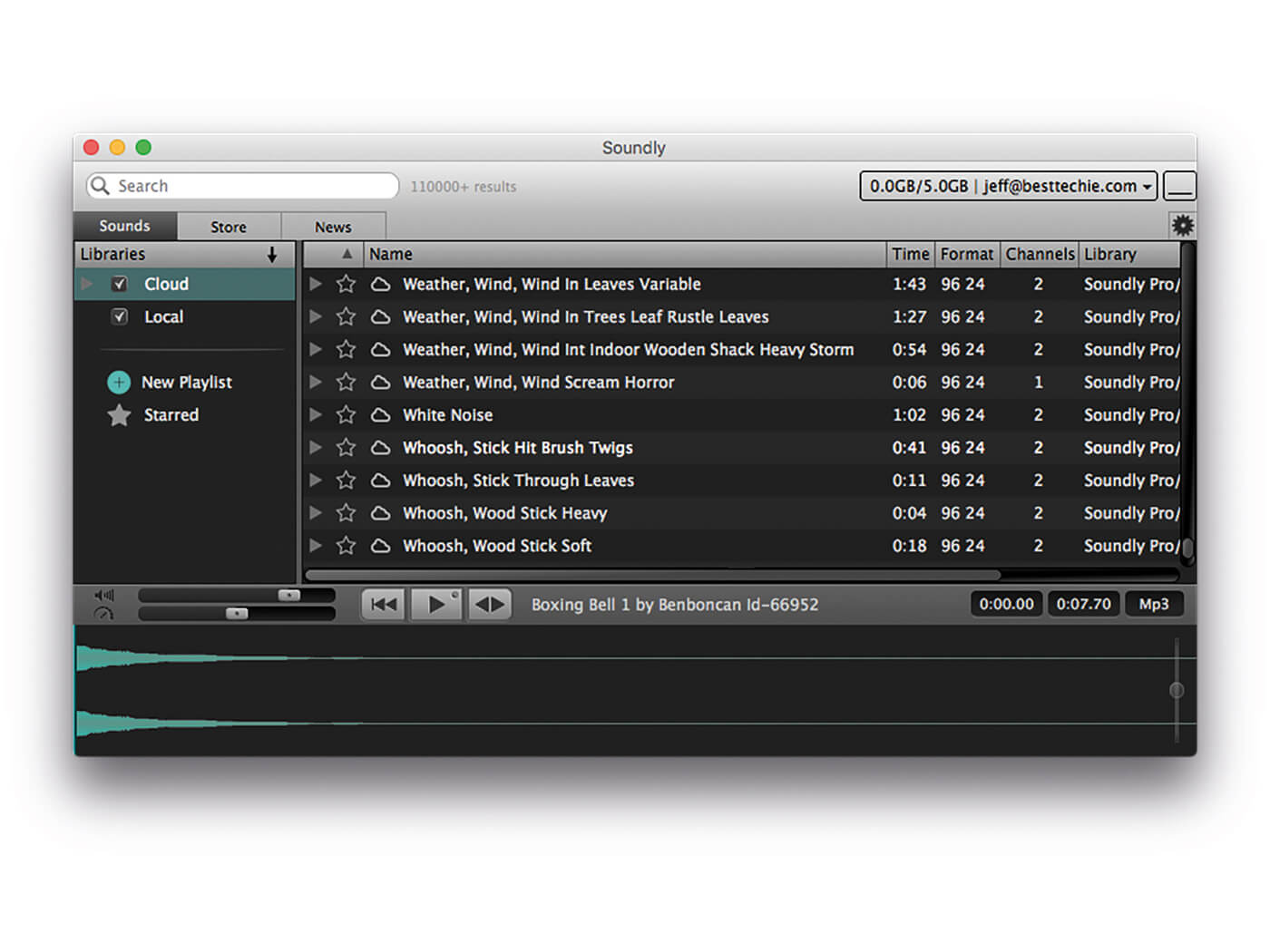
Soundly
£10 per month
Endorsed by notable sound designers such as JC Richardson and Ron DiCesare, this similar platform is available for both Mac and PC. It can access Soundly’s vast online library and enables users to store and catalogue their own libraries seamlessly. The software can be rewired into the likes of Pro Tools using an AAX plug-in too.
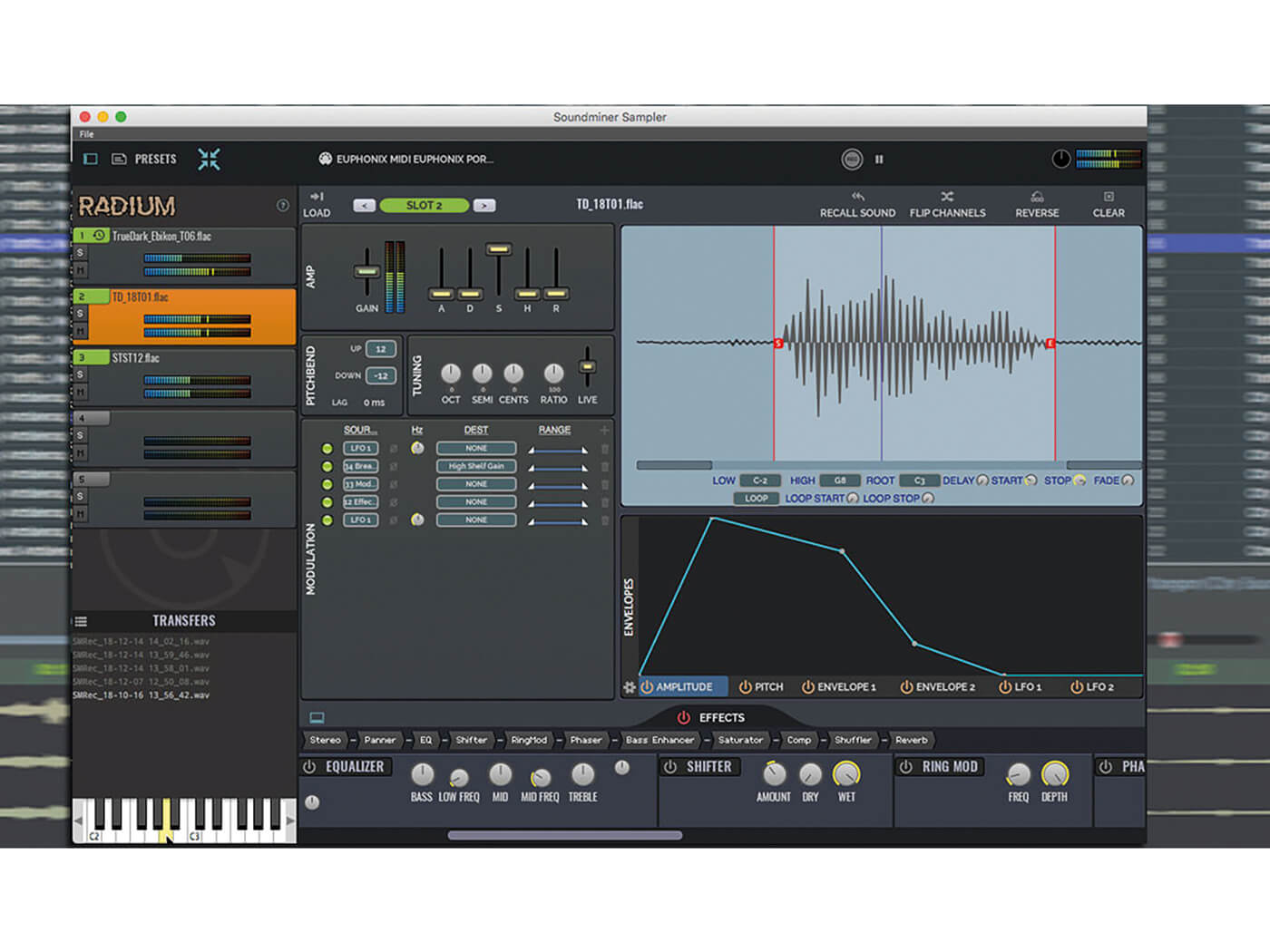
SoundMiner
£690
Another useful sample-management tool with 64-bit technology, SoundMiner features an advanced search engine, a batch converter, extensive sound-design tools, a project manager with advanced connectivity to many DAWs, and an enriched metadata tool with waveform and spotting editors.